Do you have a question about the LG HM121HF UB60 and is the answer not in the manual?
Guidance on reading the manual for proper operation and maintenance.
Information on accessing energy labels and product fiches via LG website.
Section for recording purchase details like model and serial numbers for warranty.
Emphasizes the importance of following all safety guidelines to prevent risks.
Explains symbols used to indicate potential risks or important information.
Details symbols and precautions related to the use of flammable refrigerants.
Lists critical safety precautions to prevent serious injury or death.
Lists precautions to prevent minor injuries or product damage.
Guidelines for selecting appropriate locations for outdoor unit installation.
Specifies required clearances around the outdoor unit for proper operation.
Outlines safety precautions for areas around the unit, prohibiting ignition sources.
Provides guidance on installation spacing when multiple units are used.
Explains the functions of the remote controller's display window and buttons.
Describes the primary display of the remote controller and navigation.
Explains how to access and navigate the main menu options on the remote.
Details how to select and change settings within various menu categories.
Describes messages displayed for operations, confirmations, or errors.
Explains how to view operational data like temperatures and flow rates.
Describes how the remote controller returns to the main screen automatically.
How to adjust room or water temperatures for heating and cooling operations.
Instructions on powering the unit on and off using the remote controller.
How to select and change the unit's operating modes (Cool, Heat, AI/Auto).
Details on setting and operating the unit in cooling mode.
Explanation of the compressor delay feature after cooling stops.
Details on setting and operating the unit in heating mode.
How the unit automatically adjusts settings based on outdoor temperature for comfort and efficiency.
How to set DHW (Domestic Hot Water) tank usage.
Instructions for rapidly heating the DHW tank when demand is high.
Overview of the main menu categories and their sub-sections.
Steps to access the lock setting menu on the remote controller.
Explains different lock options to restrict remote controller operations.
Steps to access the scheduling function for various operations.
How to view the status of programmed timers and schedules.
Functionality to view, add, edit, or delete saved schedules.
Step-by-step guide to creating new timer schedules.
How to set specific dates to override scheduled operations.
Setting specific times for the unit to operate in low noise mode.
Scheduling the recirculation pump for hot water.
Information on viewing energy usage and heat output trends.
Overview of various energy-related settings and monitoring options.
Steps to access the function settings menu.
Overview of available advanced functions like Wi-Fi pairing and boiler settings.
Instructions for connecting the unit to a network via Wi-Fi.
Information on integrating the unit with third-party boiler systems.
Adjusting heating and cooling water temperature limits.
Selecting between Comfort and Eco modes for hot water production.
Steps to access the user-specific settings menu.
Overview of customizable settings for user convenience.
How to change the display language of the remote controller.
Setting the preferred unit for temperature display (Celsius/Fahrenheit).
Adjusting the duration before the screen saver activates.
Setting the screen brightness level when the unit is idle.
How to set the current date on the remote controller.
How to set the current time and select time format (12/24 hour).
Configuring daylight saving time settings.
Setting a password to prevent unauthorized access to settings.
Resetting all timer, schedule, and exception day settings.
Changing the visual theme of the remote controller display.
Configuring the auto-return behavior of the remote controller interface.
Instructions for restarting the remote controller or the system.
Steps to access the service menu for technical adjustments.
Information on how to view or enter service contact details.
Details about the unit's model, serial number, and capacity.
Information on the remote controller's software and hardware versions.
Details regarding open-source software used in the product.
General guidance on using an external thermostat with the unit.
A comprehensive list of error codes, their severity, and possible causes.
Recommended checks and inspections for optimal unit availability.
Procedures and precautions for when the unit is not in operation.
Critical situations requiring immediate professional service intervention.
Guidance on reading the manual for proper operation and maintenance.
Information on accessing energy labels and product fiches via LG website.
Section for recording purchase details like model and serial numbers for warranty.
Emphasizes the importance of following all safety guidelines to prevent risks.
Explains symbols used to indicate potential risks or important information.
Details symbols and precautions related to the use of flammable refrigerants.
Lists critical safety precautions to prevent serious injury or death.
Lists precautions to prevent minor injuries or product damage.
Guidelines for selecting appropriate locations for outdoor unit installation.
Specifies required clearances around the outdoor unit for proper operation.
Outlines safety precautions for areas around the unit, prohibiting ignition sources.
Provides guidance on installation spacing when multiple units are used.
Explains the functions of the remote controller's display window and buttons.
Describes the primary display of the remote controller and navigation.
Explains how to access and navigate the main menu options on the remote.
Details how to select and change settings within various menu categories.
Describes messages displayed for operations, confirmations, or errors.
Explains how to view operational data like temperatures and flow rates.
Describes how the remote controller returns to the main screen automatically.
How to adjust room or water temperatures for heating and cooling operations.
Instructions on powering the unit on and off using the remote controller.
How to select and change the unit's operating modes (Cool, Heat, AI/Auto).
Details on setting and operating the unit in cooling mode.
Explanation of the compressor delay feature after cooling stops.
Details on setting and operating the unit in heating mode.
How the unit automatically adjusts settings based on outdoor temperature for comfort and efficiency.
How to set DHW (Domestic Hot Water) tank usage.
Instructions for rapidly heating the DHW tank when demand is high.
Overview of the main menu categories and their sub-sections.
Steps to access the lock setting menu on the remote controller.
Explains different lock options to restrict remote controller operations.
Steps to access the scheduling function for various operations.
How to view the status of programmed timers and schedules.
Functionality to view, add, edit, or delete saved schedules.
Step-by-step guide to creating new timer schedules.
How to set specific dates to override scheduled operations.
Setting specific times for the unit to operate in low noise mode.
Scheduling the recirculation pump for hot water.
Information on viewing energy usage and heat output trends.
Overview of various energy-related settings and monitoring options.
Steps to access the function settings menu.
Overview of available advanced functions like Wi-Fi pairing and boiler settings.
Instructions for connecting the unit to a network via Wi-Fi.
Information on integrating the unit with third-party boiler systems.
Adjusting heating and cooling water temperature limits.
Selecting between Comfort and Eco modes for hot water production.
Steps to access the user-specific settings menu.
Overview of customizable settings for user convenience.
How to change the display language of the remote controller.
Setting the preferred unit for temperature display (Celsius/Fahrenheit).
Adjusting the duration before the screen saver activates.
Setting the screen brightness level when the unit is idle.
How to set the current date on the remote controller.
How to set the current time and select time format (12/24 hour).
Configuring daylight saving time settings.
Setting a password to prevent unauthorized access to settings.
Resetting all timer, schedule, and exception day settings.
Changing the visual theme of the remote controller display.
Configuring the auto-return behavior of the remote controller interface.
Instructions for restarting the remote controller or the system.
Steps to access the service menu for technical adjustments.
Information on how to view or enter service contact details.
Details about the unit's model, serial number, and capacity.
Information on the remote controller's software and hardware versions.
Details regarding open-source software used in the product.
General guidance on using an external thermostat with the unit.
A comprehensive list of error codes, their severity, and possible causes.
Recommended checks and inspections for optimal unit availability.
Procedures and precautions for when the unit is not in operation.
Critical situations requiring immediate professional service intervention.
| Heating Capacity | 4.0 kW |
|---|---|
| Cooling Capacity | 3.5 kW |
| Power Supply | 220-240V, 50Hz |
| Refrigerant Type | R32 |
| Operating Temperature Range (Heating) | -15 ~ 24 °C |
| Starting Current Cooling | 4.8 A |



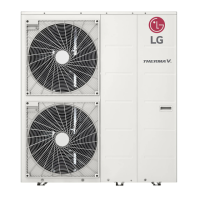
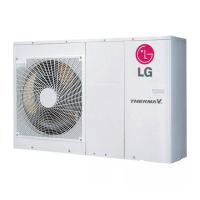
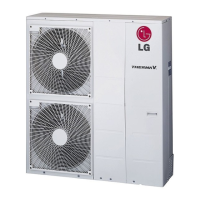

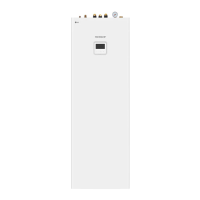

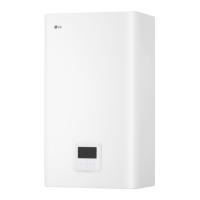
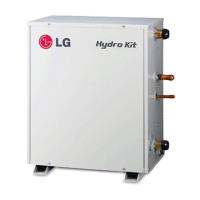
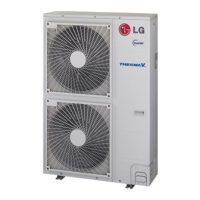
